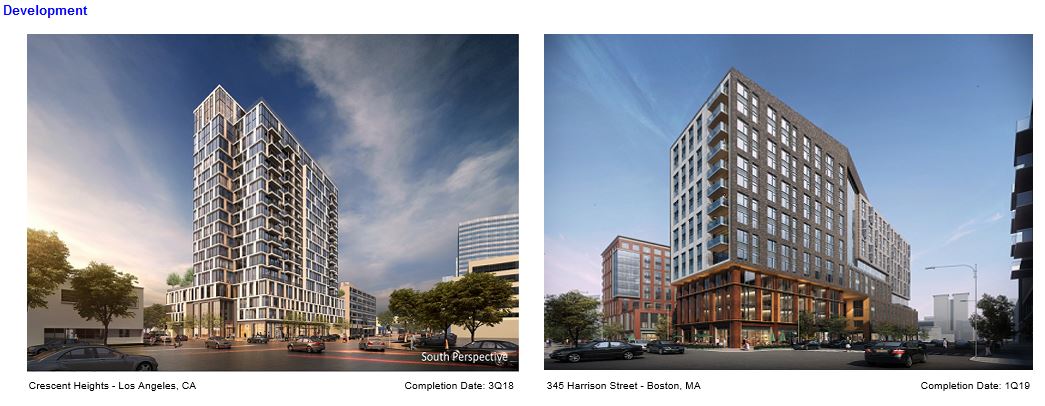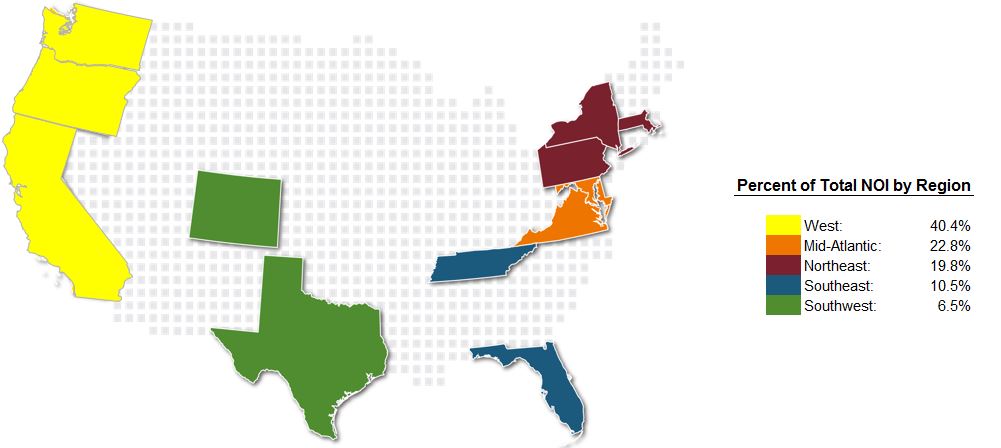|
| | | | | | | | |
| | | | | | | | |
| |
| | | | | | | | |
| | |
| Attachment 16(C) |
| |
| UDR, Inc. |
| Definitions and Reconciliations |
| September 30, 2016 |
| (Unaudited) |
| | | | | | | | | |
| | | | | | | | | |
Non-Mature: The Company defines Non-Mature Communities as those communities that have not met the criteria to be included in Same-Store Communities. |
| | | | | | | | | |
Non-Residential / Other: The Company defines Non-Residential / Other as non-apartment components of mixed-use properties, land held, properties being prepared for redevelopment and properties where a material change in home count has occurred. |
| | | | | | | | | |
Physical Occupancy: The Company defines physical occupancy as the number of occupied homes divided by the total homes available at a community. |
| | | | | | | | | |
QTD Same-Store ("SS") Communities: The Company defines QTD SS Communities as those communities stabilized for five full consecutive quarters. These communities were owned and had stabilized occupancy and operating expenses as of the beginning of the quarter in the prior year, were not in process of any substantial redevelopment activities, and not held for disposition. |
| | | | | | | | | |
Recurring Capital Expenditures: The Company defines recurring capital expenditures as expenditures that are necessary to help preserve the value of and maintain functionality at its communities. |
| | | | | | | | | |
Redevelopment Communities: The Company generally defines Redevelopment Communities as those communities where substantial redevelopment is in progress that is expected to have a material impact on the community's operations, including occupancy levels and future rental rates. |
| | | | | | | | | |
Redevelopment Projected Weighted Average Return on Incremental Capital Invested: The projected weighted average return on incremental capital invested for redevelopment projects is NOI as set forth in the Stabilization Period for Redevelopment Yield definition, less Recurring Capital Expenditures, minus the project’s annualized operating NOI prior to commencing the redevelopment, less Recurring Capital Expenditures, divided by total cost of the project. |
| | | | | | | | | |
Return on Equity ("ROE"): The Company defines ROE as a referenced quarter's NOI less interest expense, annualized, divided by the average of beginning and ending equity capital for the quarter. |
| | | | | | | | | |
| Management considers ROE a useful metric for investors as it provides a widely used measure of how well the Company is investing its capital on a leveraged basis. |
| | | | | | | | | |
Return on Invested Capital ("ROIC"): The Company defines ROIC as a referenced quarter's NOI, annualized, divided by the average of beginning and ending invested capital for the quarter. |
| | | | | | | | | |
| Management considers ROIC a useful metric for investors as it provides a widely used measure of how well the Company is investing its capital on an unleveraged basis. |
| | | | | | | | | |
Revenue Enhancing Capital Expenditures: The Company defines revenue-enhancing capital expenditures as expenditures that result in increased income generation over time. |
| | | | | | | | | |
| Management considers revenue enhancing capital expenditures a useful metric for investors as it quantifies the amount of capital expenditures that are expected to grow, not just maintain, revenues. |
| | | | | | | | | |
Sold Communities: The Company defines Sold Communities as those communities that were disposed of prior to the end of the most recent quarter. |
| | | | | | | | | |
Stabilization for Same Store Classification: The Company generally defines stabilization as when a community’s occupancy reaches 90% or above for at least three consecutive months. |
| | | | | | | | | |
Stabilized, Non-Mature Communities: The Company defines Stabilized, Non-Mature Communities as those communities that are stabilized but not yet in the Company's Same-Store portfolio. |
| | | | | | | | | |
Stabilization Period for Development Yield: The Company defines the stabilization period for development property yield as the forward twelve month NOI, excluding any remaining lease-up concessions outstanding, commencing one year following the delivery of the final home of the project. |
| | | | | | | | | |
Stabilization Period for Redevelopment Yield: The Company defines the stabilization period for a redevelopment property yield for purposes of computing the Projected Weighted Average Return on Incremental Capital Invested, as the forward twelve month NOI, excluding any remaining lease-up concessions outstanding, commencing one year following the delivery of the final home of a project. |
| | | | | | | | | |
Stabilized Yield on Developments: Expected stabilized yields on development are calculated as follows, projected stabilized NOI less management fees divided by budgeted construction cost on a project-specific basis. Projected stabilized NOI for development projects, calculated in accordance with the NOI reconciliation provided on Attachment 16(B), is set forth in the definition of Stabilization Period for Development Yield. Given the differing completion dates and years for which NOI is being projected for these communities as well as the complexities associated with estimating other expenses upon completion such as corporate overhead allocation, general and administrative costs and capital structure, a reconciliation to GAAP measures is not meaningful. Projected NOI for these projects is neither provided, nor is representative of Management’s expectations for the Company’s overall financial performance or cash flow growth and there can be no assurances that forecast NOI growth implied in the estimated construction yield of any project will be achieved. |
| | | | | | | | | |
| Management considers estimated stabilized yield on development as a useful metric for investors as it helps provide context to the expected effects that development projects will have on the Company’s future performance once stabilized. |
| | | | | | | | | |
Total Revenue per Occupied Home: The Company defines total revenue per occupied home as rental and other revenues, calculated in accordance with GAAP, divided by the product of occupancy and the number of apartment homes. |
| | | | | | | | | |
| Management considers total revenue per occupied home a useful metric for investors as it serves as a proxy for portfolio quality, both geographic and physical. |
| | | | | | | | | |
TRS: The Company's taxable REIT subsidiary ("TRS") focuses on development, land entitlement and short-term hold investments. TRS gains on sales, net of taxes, is defined as net sales proceeds less a tax provision and the gross investment basis of the asset before accumulated depreciation. |
| | | | | | | | | |
YTD Same-Store ("SS") Communities: The Company defines YTD SS Communities as those communities stabilized for two full consecutive calendar years. These communities were owned and had stabilized occupancy and operating expenses as of the beginning of the prior year, were not in process of any substantial redevelopment activities, and not held for disposition. |
| | | | | | | | | |


